Commentary: Random Thoughts from the Humidor (VIII)
16 Apr 2012
In this segment of Random Thoughts from the Humidor, I look at a rousing success, a continuing failure, and the burning of something other than tobacco.
A True Cigar King
First, some good news. In a recent essay in The Tampa Tribune, King Corona Cigars owner Don Barco explored the comeback in the city’s one-time cigar manufacturing hub, Ybor City. For cigar lovers, the most telling parts came when Barco talked about recent trends at his restaurant/bar/café/cigar shop situated on East Seventh Avenue, the district’s main drag. Barco wrote that 2010 was his best since opening 14 years ago, even better than during the ’90s boom. Then, 2011 beat it in sales, “and as the year ended we had our best week of business since the Super Bowl of 2009.†I’ve never met Barco, but I’m sure I’d enjoy having a cigar with him. His shop is my favorite place to enjoy a smoke in Ybor, and StogieGuys.com has sung the praises of one of his house brands, Ybor City Handmades. It’s great to salute a cigar success.
Cuba: Good and Bad
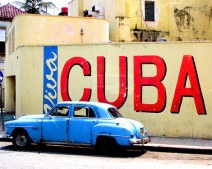 Last year Cigar Aficionado published a colorful report of Havana’s top tourist spots. For a view of life on the island for those who live there, check the March 24-30 issue of The Economist. Its 10-page report has such startling revelations as the fact that while state farms hold 75% of Cuba’s agricultural land, 45% of it was idle and weed-choked as of 2007; the post office sells email access for $1.50 a minute; and Cuba is the only Latin American country with a declining population, a population whose percentage of those under 15 and those over 60 is about equal.
Last year Cigar Aficionado published a colorful report of Havana’s top tourist spots. For a view of life on the island for those who live there, check the March 24-30 issue of The Economist. Its 10-page report has such startling revelations as the fact that while state farms hold 75% of Cuba’s agricultural land, 45% of it was idle and weed-choked as of 2007; the post office sells email access for $1.50 a minute; and Cuba is the only Latin American country with a declining population, a population whose percentage of those under 15 and those over 60 is about equal.
Where There’s This Smoke, There’s Definitely Fire
If you’re involved in fighting smoking restrictions, you can likely find some interesting facts in an InvestigateWest report on the health dangers of wood smoke. For example, Washington state’s “Ecology Department estimates that sooty pollution from sources including wood smoke and diesel exhaust contributes to 1,100 deaths and $190 million in health costs annually.†And among the hazardous chemicals released by burning wood are the carcinogen benzene and carbon monoxide, linked to heart damage. But not a lot is being done because of the high costs and potential punitive impact on poor people who rely on wood for heat. My point isn’t to argue for more restrictions. I think this kind of information can be used to point out to lawmakers that there are many risks and to question whether it’s fair to focus on tobacco simply because it’s an easy target. If air quality is such a vital concern, shouldn’t it be dealt with in a comprehensive fashion? It might well be asked, when do they plan to take action on fireplaces and wood stoves?
photo credit: Flickr

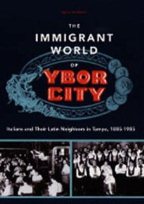 This excellent read is made for consumers of American history. Highlighting the Spanish-American War and the arrival of Teddy Roosevelt’s Rough Riders in Tampa, through the city’s immigrant culture we glimpse into a world of American nostalgia and understand why so many who arrived from foreign shores decided to stay. Cigar makers were paid well, and their families had access to libraries, theaters, baseball fields, and affordable healthcare. It was the American dream at its finest. And Mormino and Pozetta have captured it all. From the evolution of Tampa as an urban center to the economic adjustments of the Great Depression. From the establishment of an immigrant culture in to World War Two and beyond.
This excellent read is made for consumers of American history. Highlighting the Spanish-American War and the arrival of Teddy Roosevelt’s Rough Riders in Tampa, through the city’s immigrant culture we glimpse into a world of American nostalgia and understand why so many who arrived from foreign shores decided to stay. Cigar makers were paid well, and their families had access to libraries, theaters, baseball fields, and affordable healthcare. It was the American dream at its finest. And Mormino and Pozetta have captured it all. From the evolution of Tampa as an urban center to the economic adjustments of the Great Depression. From the establishment of an immigrant culture in to World War Two and beyond.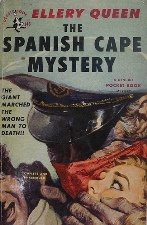 But that wasn’t the surprise. The movie, The Spanish Cape Mystery, was the first Ellery Queen film, and it was released in 1935. In that era, cigar smoking was common. You’d even see photos of Marlene Dietrich sporting a cigar in the 1930s. No, the surprise came as I watched Berton Churchill—not only aptly named for a cigar smoker, but a long-time actor and Screen Actors Guild founder you’d almost certainly recognize if you watch many pre-1940 movies—slide the cigar from a cellophane sleeve. I knew cellophane had been around a long time, but I had no idea it was used on cigars back then.
But that wasn’t the surprise. The movie, The Spanish Cape Mystery, was the first Ellery Queen film, and it was released in 1935. In that era, cigar smoking was common. You’d even see photos of Marlene Dietrich sporting a cigar in the 1930s. No, the surprise came as I watched Berton Churchill—not only aptly named for a cigar smoker, but a long-time actor and Screen Actors Guild founder you’d almost certainly recognize if you watch many pre-1940 movies—slide the cigar from a cellophane sleeve. I knew cellophane had been around a long time, but I had no idea it was used on cigars back then. While it’s often forgotten now, just days after the
While it’s often forgotten now, just days after the 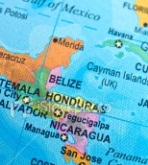 In each cigar review, for example, we always try to provide the country (or countries) of origin of the wrapper, binder, and filler, when that information is available. And it often is. So most of our
In each cigar review, for example, we always try to provide the country (or countries) of origin of the wrapper, binder, and filler, when that information is available. And it often is. So most of our 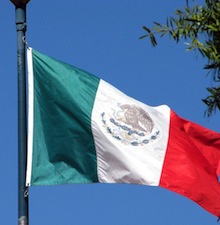 Mexican tobacco, the declaration went, was breaking out, no longer consigned to the New York cabbie smoke, Te-Amo. Well, maybe not. I wouldn’t rank the effort with the failed public relations campaigns behind, say, New Coke or Ford’s Edsel. But I also would call it far from successful.
Mexican tobacco, the declaration went, was breaking out, no longer consigned to the New York cabbie smoke, Te-Amo. Well, maybe not. I wouldn’t rank the effort with the failed public relations campaigns behind, say, New Coke or Ford’s Edsel. But I also would call it far from successful. Are Cubans really the best?
Are Cubans really the best? Patrick Ashby
Co-Founder & Editor in Chief
Patrick Ashby
Co-Founder & Editor in Chief Patrick Semmens
Co-Founder & Publisher
Patrick Semmens
Co-Founder & Publisher George Edmonson
Tampa Bureau Chief
George Edmonson
Tampa Bureau Chief